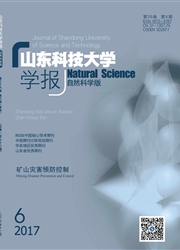

 中文摘要:
中文摘要:
格子煤气的自动化( LGA )方法,被介绍一个思考系数让在阶段之间的边阶在当前的路径上显示出它的效果改进,在这份报纸被使用为调查分发在在形成因素(F)和岩石porosity()之间的关系上打的泥土内容和泥土的效果在数字岩石中模仿当前的流动。数字岩石模型被与不同形状和半径模仿矩阵粒子的自然存款构造。基于模拟结果,驱散的泥土和把压成薄片的泥土能导致 F- 的一种非高射炮关系,这被发现。F- 关系上的把压成薄片的泥土的非高射炮效果比驱散的泥土的更重要。而且,一个现实主义的模型为描述泥土内容的效果的份量上在这个工作被开发(嘘作为 V 表示了) 在参数上 and m。这些学习结果进一步在毛孔规模在电的运输性质的学习表明了 LGA 的有效性。
 英文摘要:
英文摘要:
The Lattice Gas Automation (LGA) method, which is improved by introducing a reflection coefficient for the border between phases to show its effect on current path, is used in this paper to simulate the current flow in digital rock for investigating the effects of clay content and clay distribution types on the relationship between formation factor(F) and rock porosity(φ). The digital rock model is constructed by simulating a natural deposit of matrix particles with different shapes and radius. Based on the simulation results, it was found that both dispersed clay and laminated clay can lead to a non-Archie relationship of F-φ. The non-Archie effect of laminated clay on the F-φ relationship was more significant than that of dispersed clay. Moreover, a realistic model is developed in this work for quantitatively describing the effect of clay content (Denoted as Vsh) on parameters a and m. These study results have further demonstrated the validity of LGA in study of electrical transport properties at a pore scale.
 同期刊论文项目
同期刊论文项目
 同项目期刊论文
同项目期刊论文
 Investigation of effects of clay content on F-Phi relationship by Lattice gas automation using digit
Investigation of effects of clay content on F-Phi relationship by Lattice gas automation using digit 2-D numerical simulation of digital rock experiments with lattice gas automation for electrical prop
2-D numerical simulation of digital rock experiments with lattice gas automation for electrical prop 期刊信息
期刊信息
